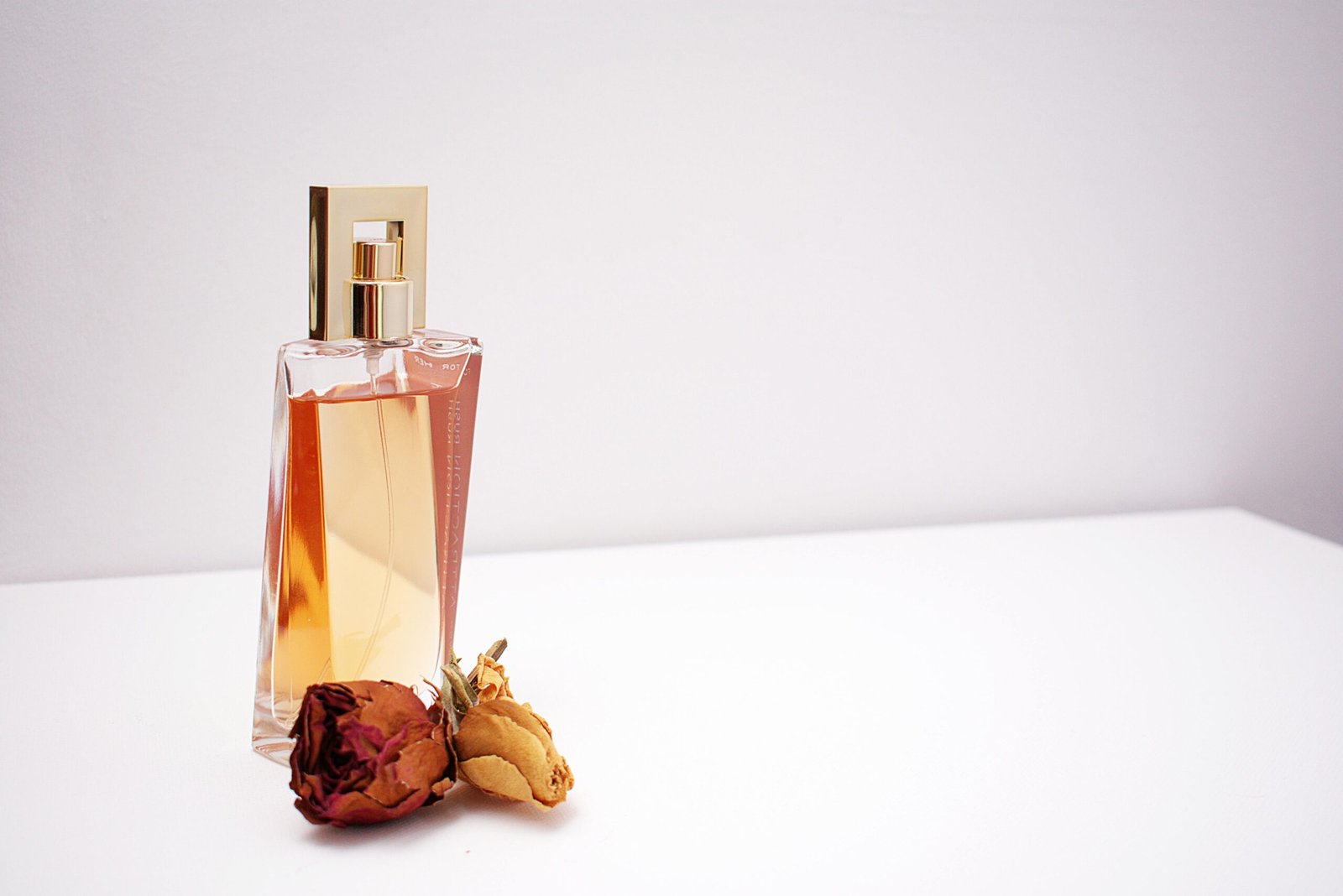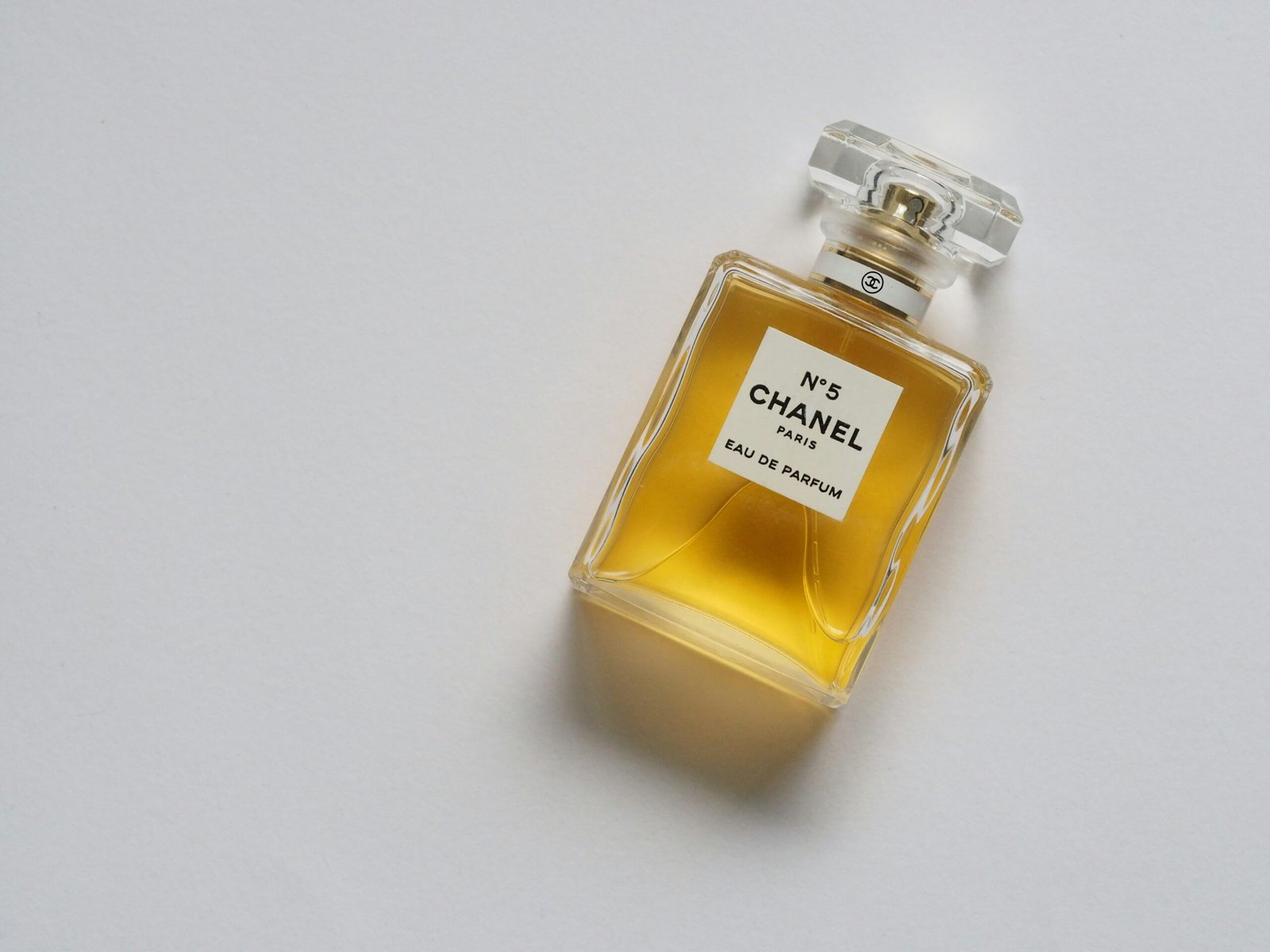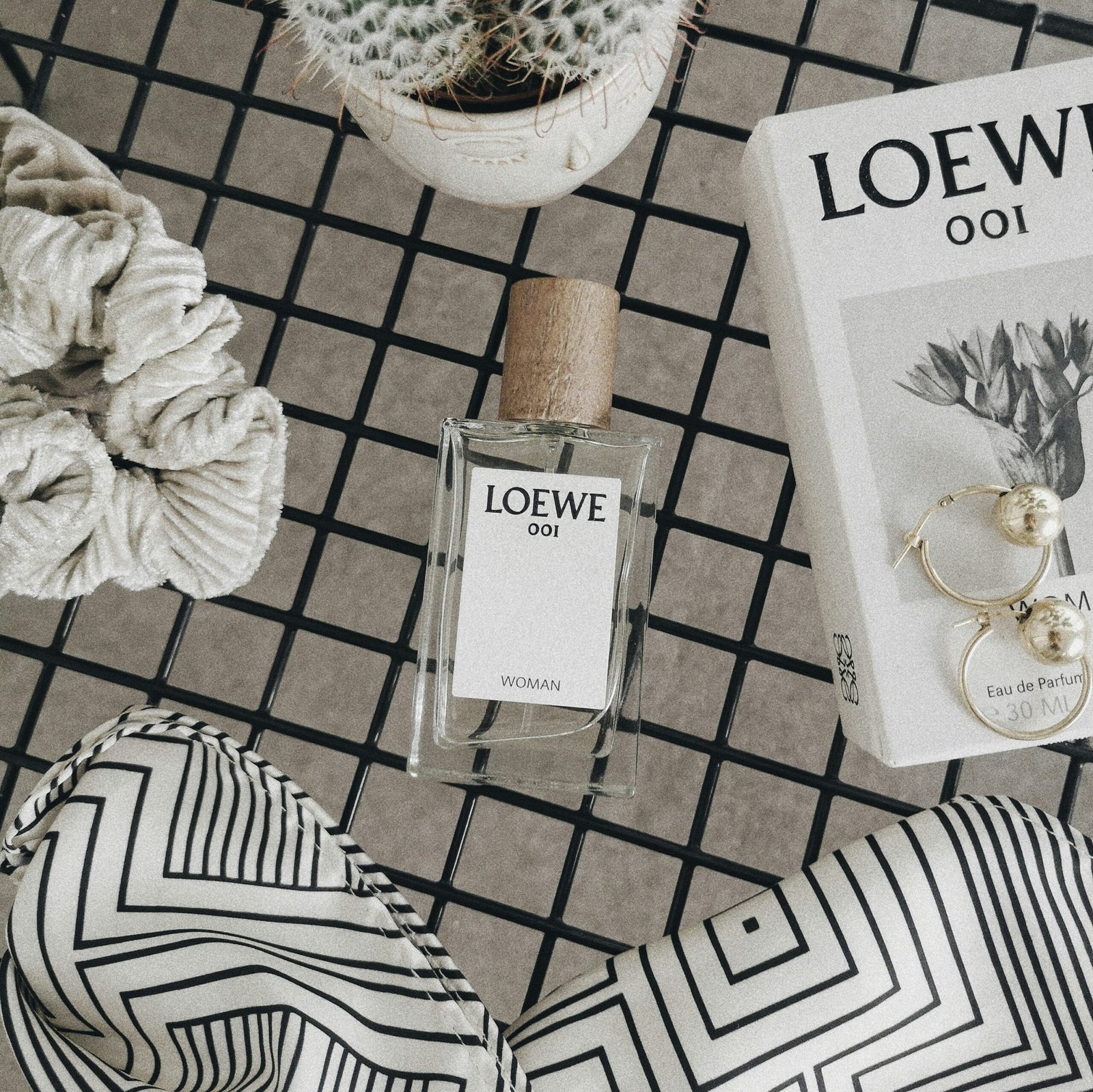Scent of Elegance: Crafting Your Signature Fragrance Profile
Fragrance has long been intertwined with the fashion industry, serving as an invisible yet powerful accessory that complements personal style. A signature scent is more than just a pleasant aroma; it is an extension of an individual’s unique identity and an essential element of their overall aesthetic. In the same way that clothing and accessories are chosen to reflect one’s personality, a well-selected fragrance can enhance and complete one’s fashion ensemble.
The importance of fragrance in fashion lies in its ability to evoke emotions, create memories, and leave a lasting impression. A distinctive scent can set the wearer apart, making them memorable to those they encounter. Just as a particular outfit can convey confidence, elegance, or sophistication, a carefully chosen fragrance can project these qualities and more. It becomes a silent statement of who you are and how you wish to be perceived.
Moreover, fragrance has the unique capability to build a sensory connection. When someone catches a whiff of a familiar scent, it can instantly remind them of the person who wears it. This association reinforces personal branding and establishes a consistent, recognizable presence. In the competitive world of fashion, where first impressions are paramount, the right fragrance can be a powerful tool for standing out and being remembered.
In essence, fragrance is an indispensable accessory in the realm of fashion. It adds an invisible layer of allure and sophistication, enhancing the overall impact of one’s appearance. By thoughtfully selecting a signature scent that aligns with their style and personality, individuals can further express themselves and leave a lasting, fragrant imprint on the world around them.
Understanding Fragrance Notes
Fragrance is a complex art form, meticulously crafted through the harmonious blend of various scent elements, known as fragrance notes. These notes are categorized into three distinct layers: top, middle (heart), and base notes. Each layer contributes uniquely to the overall scent profile and unfolds sequentially over time, creating a dynamic olfactory experience.
The top notes are the first impression of a fragrance, often described as the opening or head notes. They are typically light, fresh, and volatile, evaporating quickly to pave the way for the subsequent layers. Common ingredients in this layer include citrus fruits like lemon and bergamot, as well as herbal elements such as lavender and mint. These notes are crucial as they entice the wearer and set the initial tone of the fragrance.
Following the top notes are the middle notes, also known as the heart notes. These form the core of the fragrance and emerge as the top notes dissipate. Middle notes are generally more robust, lasting longer and providing depth to the scent profile. Ingredients frequently found in this layer include floral elements like rose, jasmine, and ylang-ylang, as well as spices such as cinnamon and cardamom. The heart notes are essential in defining the fragrance’s character and are often the most memorable part of the scent.
The base notes are the final layer, providing the lasting impression of the fragrance. These notes are rich and enduring, anchoring the scent and adding complexity. Common base note ingredients include woods like sandalwood and cedarwood, resins such as amber and frankincense, and rich elements like vanilla and musk. The base notes are designed to linger on the skin, ensuring the fragrance remains noticeable for hours.
Understanding these three layers is vital when selecting a signature fragrance, as each note contributes to the scent’s evolution and overall appeal. By appreciating the interplay between top, middle, and base notes, one can better identify a fragrance that resonates on a personal level, crafting a scent profile that exudes elegance and individuality.
Types of Fragrances
Fragrances can be categorized into several distinct types, each possessing unique characteristics and ingredients that define their profile. Understanding these categories can help you select a fragrance that complements your personality, style, and the occasion. The primary categories include floral, oriental, woody, and fresh fragrances.
Floral fragrances are among the most popular and versatile. They often feature notes like rose, jasmine, lily, and peony, evoking a sense of romance and femininity. These fragrances are ideal for those who appreciate a classic, elegant touch. Popular examples include Chanel No. 5 and Marc Jacobs Daisy, both of which highlight the timeless appeal of floral scents.
Oriental fragrances are known for their warm, exotic, and spicy characteristics. They typically include ingredients such as vanilla, amber, musk, and spices like cinnamon and clove. These scents are perfect for evening wear or special occasions, providing a rich and captivating aura. Notable oriental perfumes include Yves Saint Laurent Opium and Tom Ford Black Orchid, which exude a sense of mystery and sophistication.
Woody fragrances offer a grounding and earthy quality, often derived from notes such as sandalwood, cedar, vetiver, and patchouli. These fragrances are well-suited for individuals who prefer a more natural and refined scent profile. Woody fragrances are versatile, appealing to both men and women. Examples include Gucci Guilty Absolute and Terre d’Hermès, which emphasize the depth and complexity of woody notes.
Fresh fragrances are characterized by their clean, crisp, and invigorating notes. They often feature citrus, green, and aquatic elements such as lemon, bergamot, mint, and sea breeze. These scents are ideal for daytime wear and are perfect for those who enjoy a light and refreshing fragrance. Popular fresh perfumes include Dolce & Gabbana Light Blue and CK One, both of which capture the essence of freshness and vitality.
By understanding these categories and their distinct attributes, you can better navigate the world of fragrances and find the perfect scent that resonates with your unique identity and lifestyle.
How to Choose Your Signature Scent
Choosing a signature fragrance is a deeply personal endeavor, one that goes beyond mere preference to encompass elements like body chemistry and lifestyle. To embark on this olfactory journey, begin by understanding what you are naturally drawn to. This could involve floral, woody, citrus, or oriental notes. Your personal preferences will guide your initial selections, making the process more intuitive and enjoyable.
Next, consider your body chemistry, which can significantly alter how a fragrance smells on your skin. The same scent can vary greatly from one person to another due to differences in skin pH, oiliness, and even diet. Testing fragrances on your skin rather than on paper is crucial; it allows the scent to interact with your natural oils and reveal its true character. Apply the fragrance to your wrist or inner elbow and allow it to develop over several hours, observing how it evolves from the top notes through to the heart and base notes.
Your lifestyle also plays a pivotal role in selecting a signature scent. If your daily routine involves high-energy activities or frequent transitions between environments, you might prefer a lighter, more refreshing fragrance. Conversely, if your lifestyle is more sedentary or you often find yourself in formal settings, richer, more complex scents may be more appropriate.
Fragrance layering offers an additional dimension of customization, enabling you to create a unique scent profile. This involves combining different products such as scented lotions, body washes, and perfumes that share complementary notes. By layering, you can enhance the longevity and complexity of your fragrance, making it distinctly yours.
Ultimately, the process of choosing a signature fragrance is both an art and a science. By considering personal preference, body chemistry, and lifestyle, and by embracing the art of fragrance layering, you can craft a scent profile that is uniquely tailored to you. This thoughtful approach ensures that your signature fragrance is not just a scent, but an extension of your identity.
The Art of Applying Fragrance
Understanding the art of applying fragrance is essential for ensuring its longevity and optimal projection. The key to an enduring scent lies in strategic application to pulse points—areas where blood vessels are closest to the skin surface, emitting more heat and thus diffusing the fragrance better. Common pulse points include the wrists, behind the ears, the base of the throat, and the inner elbows. Applying fragrance to these areas can enhance its overall presence and ensure a consistent aroma throughout the day.
When using sprays, it is advisable to hold the bottle approximately 5-7 inches away from the skin. Spritz the fragrance lightly on the pulse points and allow it to air dry naturally. Avoid the common mistake of rubbing the fragrance into the skin, as this can break down the scent molecules and diminish the fragrance’s integrity and longevity. Instead, let the scent settle and develop on its own.
For those who prefer fragrance oils, the application method is slightly different. Oils are typically more concentrated and should be applied sparingly. Use the applicator or a fingertip to dab a small amount onto the pulse points. Due to their intensity, a little goes a long way, and over-application can result in an overwhelming scent. The oils’ natural affinity for the skin ensures a lasting fragrance, so moderation is key.
Solid fragrances, often found in balms or waxes, require a gentle touch. Use your fingertip to warm a small amount of the solid fragrance and apply it to the pulse points. Like oils, solid fragrances are concentrated and should be used sparingly. Their compact and portable nature makes them an excellent choice for touch-ups throughout the day.
In conclusion, regardless of the type of fragrance product you choose, understanding the nuances of application can significantly impact the fragrance’s performance. By focusing on pulse points, avoiding over-application, and allowing the scent to develop naturally, you can maximize the elegance and longevity of your chosen fragrance.
Seasonal Scents: Adapting Your Fragrance to the Time of Year
The interplay between seasons and scents is a nuanced art that can significantly elevate one’s fragrance profile. As each season brings its unique climate and atmosphere, it necessitates a thoughtful adaptation of one’s fragrance choices. In spring and summer, the warmer temperatures and blossoming nature call for lighter, fresher scents. These can include citrus notes like bergamot and lemon, as well as floral aromas such as jasmine and lily of the valley. These fragrances provide a refreshing and invigorating aura, complementing the season’s vivacity.
Conversely, as the weather cools in fall and winter, the preference shifts towards warmer, richer scents. These seasons are synonymous with comfort and coziness, best evoked through deeper, more complex fragrances. Notes of amber, musk, vanilla, and spices like cinnamon and clove create a warm, enveloping presence that aligns perfectly with the colder months. Such fragrances not only evoke a sense of warmth but also add a layer of sophistication and depth to your overall scent profile.
Transitioning between seasonal fragrances requires a strategic approach to ensure a seamless shift. One effective method is to gradually incorporate elements of the upcoming season into your current fragrance routine. For instance, as summer wanes, begin to introduce subtle hints of woody or spicy notes to your fresh, floral scents. This gradual integration helps ease the transition and prepares your olfactory senses for the incoming seasonal change.
In conclusion, understanding and adapting to seasonal scents not only enhances personal elegance but also ensures your fragrance remains harmonious with the environment. Whether it’s the crisp, invigorating notes of spring and summer or the rich, comforting aromas of fall and winter, a well-curated fragrance collection reflects an appreciation for the art of scent and its seasonal dynamics.
Caring for Your Fragrance Collection
Proper care and storage of your fragrance collection are essential to preserving the integrity and longevity of your perfumes. The delicate composition of fragrances makes them susceptible to degradation when exposed to unfavorable environmental conditions such as light, temperature, and humidity. Understanding these factors is crucial to maintaining the quality of your scents.
Firstly, light, especially direct sunlight, can break down the chemical structure of a fragrance, leading to a change in scent and reduced potency. Therefore, it is advisable to store your perfumes in a dark or dimly lit area, away from direct sunlight. A cabinet or a drawer can be an ideal storage solution.
Temperature fluctuations can also adversely affect your fragrance. High temperatures can cause the essential oils in the perfume to evaporate more quickly, diminishing its longevity. Similarly, very low temperatures can alter the fragrance’s composition. To avoid such issues, store your perfumes at a consistent room temperature, ideally between 15-20°C (59-68°F).
Humidity is another factor that can impact your perfume collection. High humidity levels can promote the growth of mold and mildew, which can contaminate the fragrance. To prevent this, keep your perfumes in a dry environment. Avoid storing them in bathrooms or other areas prone to high humidity.
Organizing your fragrance collection can also enhance its longevity. Arrange your perfumes in a way that minimizes handling, such as placing them on a stable shelf. This reduces the risk of accidental spills or exposure to light and air. Additionally, keeping your perfumes in their original boxes can provide an extra layer of protection.
It is important to know when a fragrance has gone bad. Signs of a deteriorating perfume include a change in color, smell, or consistency. If your fragrance smells off or has developed a cloudy appearance, it is likely time to discard it.
To maintain and refresh your scent throughout the day, consider using complementary products such as body lotions or shower gels from the same fragrance line. These products can enhance the longevity of the scent on your skin. For a quick refresh, carry a travel-sized version of your perfume or use fragrance blotters that you can discreetly apply when needed.
Conclusion and Personal Fragrance Journey
Throughout this article, we have explored the intricate world of fragrances, delving into the various elements that contribute to crafting a signature scent. From understanding the different fragrance families, to recognizing the significance of top, heart, and base notes, the journey to finding a personal scent is both an art and a science. Embracing this journey allows one to discover a fragrance that resonates deeply with their personality and evokes a unique emotional connection.
My personal journey towards finding my signature fragrance was one of both experimentation and self-discovery. I recall the initial excitement of exploring countless scents, each with its own story and character. The turning point came when I encountered a particular blend of sandalwood and amber. The warm, woody undertones and the subtle hint of sweetness struck a chord with me, evoking memories of cherished moments and a sense of comfort. This fragrance didn’t just smell pleasant; it felt like an olfactory extension of my identity.
Embarking on your own fragrance journey can be equally rewarding. It is a process that not only involves the senses but also taps into the emotional and personal facets of who you are. Whether you are drawn to floral bouquets, spicy notes, or fresh, citrusy aromas, the key is to remain open-minded and patient. Sampling different scents, understanding their evolution over time on your skin, and paying attention to how they make you feel are critical steps in this process.
We invite you to share your experiences in the comments section below. What fragrance notes resonate with you? Have you discovered a scent that feels like ‘you’? Your journey and insights can inspire others who are also on the path to finding their signature fragrance. Together, let’s continue to explore and celebrate the beautiful world of scents, one fragrance at a time.
Choosing a signature fragrance is an art that involves understanding various fragrance notes and how they interact with your body chemistry. Fragrances are complex compositions that can be broken down into top, middle, and base notes. Top notes are the initial scents you detect immediately after application, such as citrus or fresh herbs. Middle notes, also known as heart notes, emerge as the top notes fade, often featuring floral or spicy aromas. Base notes are the final phase, providing depth and longevity with woody or musky scents.
There are several fragrance families to consider when crafting your signature scent. Floral fragrances are characterized by their sweet and romantic bouquet, often incorporating rose, jasmine, or lily. Oriental fragrances, in contrast, are rich and exotic, featuring spices like cinnamon and vanilla. Woody fragrances offer a grounding effect with notes of cedar, sandalwood, and vetiver. Fresh fragrances, reminiscent of clean, crisp environments, often include elements like citrus, green leaves, and aquatic notes.
To select the perfect fragrance, consider factors such as your personal style and the occasion. A lighter, fresh fragrance may be ideal for daytime wear, while a deeper, oriental fragrance could be more suitable for evening events. Seasonal changes also play a role; lighter scents are often preferred in warmer weather, whereas richer, more intense fragrances are favored in colder months.
Proper application is crucial for optimal scent projection and longevity. Apply fragrance to pulse points, such as the wrists, neck, and behind the ears, where the skin is warmer and helps to diffuse the scent. Layering fragrance products, like using a matching body lotion and perfume, can also enhance the overall effect.
Fragrance storage is another key consideration. Store your fragrances in a cool, dark place to preserve their integrity and prevent the breakdown of delicate notes. Building a fragrance collection allows you to switch up your scent based on your mood, occasion, or season, adding an extra dimension to your personal style.
Ultimately, your fragrance should be a reflection of your individuality and a subtle yet powerful accessory in your fashion arsenal. Experimenting with different notes and families, and even customizing your fragrance through layering, can help you craft a truly unique scent profile.
Share this content:




 Italiano
Italiano English
English Español
Español